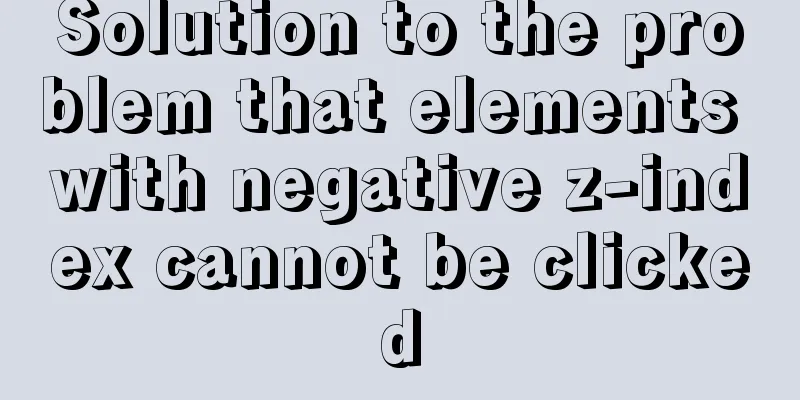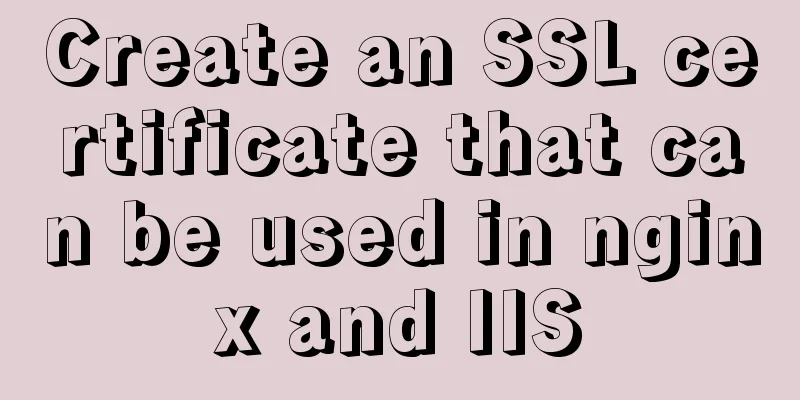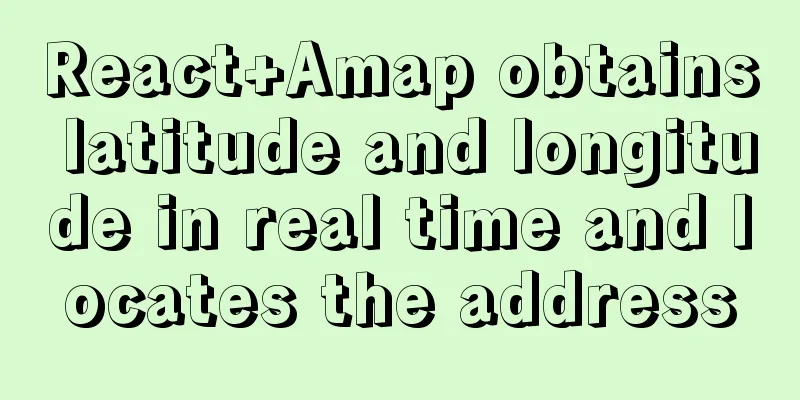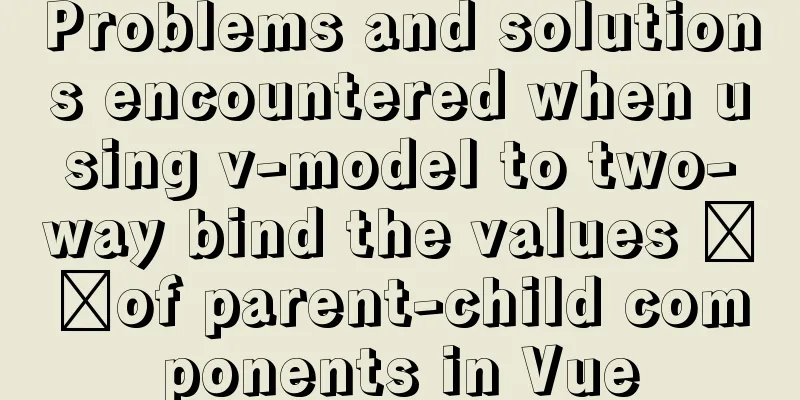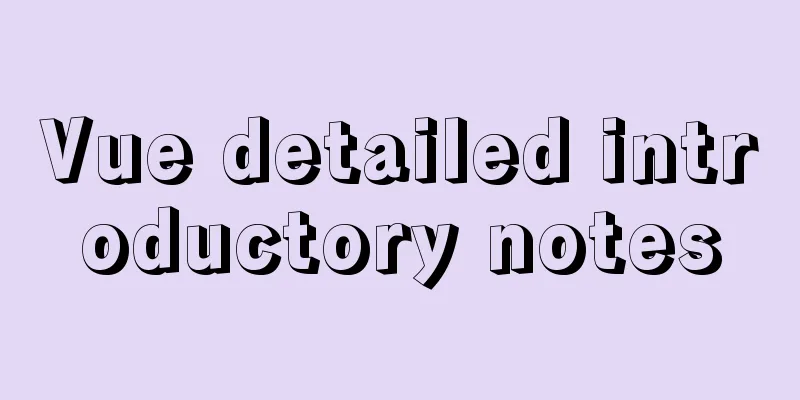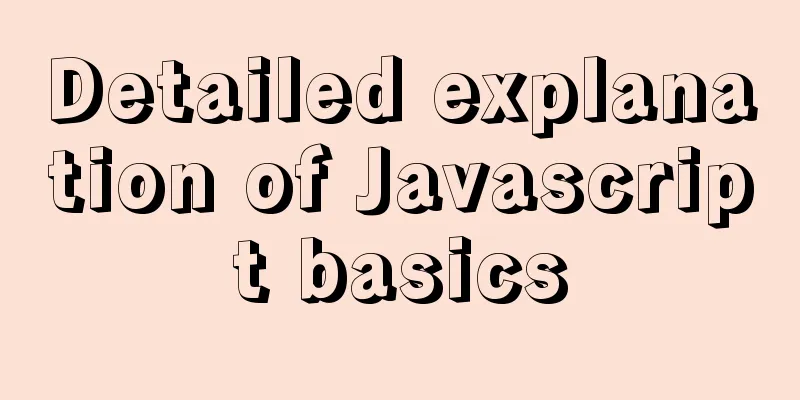Detailed explanation of HTML programming tags and document structure
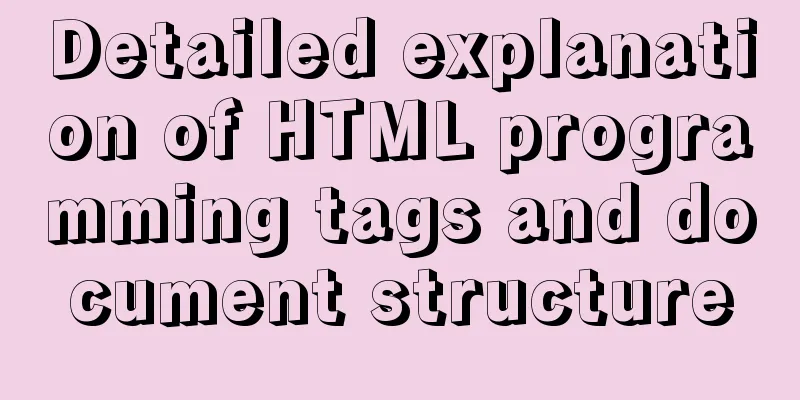
|
The purpose of using HTML to mark up content is to give web pages semantics. In other words, it is to give your web page content some meaning that the user agent can understand. HTML specifies a set of tags to mark content in different ways. Each tag is a description of what it contains. The most commonly used HTML describes headings, paragraphs, links, and images. Currently, HTML has a total of 114 tags, but according to the 80/20 principle, using about 25 of them can meet 80% of the marking needs. The latest version of HTML, HTML5, defines a new batch of structural tags to group tags of related content, thereby better regulating the overall structure of web pages. These new tags include <header>, <nav> (navigation), <article>, <section>, <aside>, and <footer>. 1. Tag closure For each element that contains content (such as headings, paragraphs, and images), there are two different ways to tag them, one using a closed tag and the other using an open tag, depending on whether the content it contains is text or not. 1.1 Text closing tag Example: <h1>Hello, CSS!</h1> Example: <img src="images/dog.jpg" alt="This is my dog." > hint: XML/HTML CodeCopy content to clipboard
In HTML5, you can omit the last closing slash and write: XML/HTML CodeCopy content to clipboard
2. Attributes Tip: Screen readers used by visually impaired users will read the contents of the alt attribute aloud, so be sure to give the tag 3. Titles and paragraphs HTML not only specifies basic content tags such as titles, images, and paragraphs, but also specifies tags for creating lists, 5. Nested Tags Simply put, it is to nest one tag inside another tag. XML/HTML CodeCopy content to clipboard
7. Block-level elements and inline elements Document flow effect: HTML elements flow from the top of the page to the bottom in the order in which they appear in the markup. Almost all HTML elements have a display attribute of either block or inline. The most obvious exception is the table element, which has its own special display value. Block-level elements (such as headings and paragraphs) are stacked on top of each other down the page, with each element occupying its own line. Inline elements (such as links and images) will be displayed side by side, and will only be folded to the next line if there is not enough space to display them side by side. No matter which HTML element you want to understand, the first question you should ask is: is it a block-level element or an inline element? Knowing this, you can anticipate how an element will be positioned initially when writing your markup, so you can plan how to reposition it with CSS in the future. There are two things to know: Block-level element boxes expand to the same width as their parent element. Inline element boxes shrink-wrap their contents, and try to wrap as tightly as possible. 7. Nested Elements Nested within the markup are HTML tags, and nested on the screen are boxes. The Document Object Model (DOM) observes the elements in the page and the attributes of each element from the perspective of the browser, thereby deriving a family tree of these elements. Through the DOM, you can determine the relationship between elements. Referencing the DOM in CSS The process of CSS manipulating DOM is to first select one or a group of elements and then modify the properties of these elements. When you modify an element via CSS, such as changing the width or inserting a pseudo-element in the markup, those changes are immediately reflected in the DOM and on the page. In short, the DOM is constructed through HTML markup, and then CSS is used to modify the DOM when the page is initially loaded and when the user interacts with the page. |
<<: Detailed explanation of how to clear a few pixels of blank space under an image using CSS
>>: How to get/calculate the offset of a page element using JavaScript
Recommend
nginx automatically generates configuration files in docker container
When a company builds Docker automated deployment...
Detailed tutorial on customizing the installation path of MySQL 5.7.18 version (binary package installation)
Installation path: /application/mysql-5.7.18 1. P...
Nofollow makes the links in comments and messages really work
Comments and messages were originally a great way...
How to use JavaScript to determine several common browsers through userAgent
Preface Usually when making h5 pages, you need to...
Analysis of MySQL crash recovery based on Redo Log and Undo Log
Table of contents MySQL crash recovery process 1....
MySQL statement to get all dates or months in a specified time period (without setting stored procedures or adding tables)
mysql gets all dates or months in a time period 1...
Best Practices Guide for MySQL Partitioned Tables
Preface: Partitioning is a table design pattern. ...
Analysis of Linux kernel scheduler source code initialization
Table of contents 1. Introduction 2. Basic Concep...
Optimization of MySQL thread_stack connection thread
MySQL can be connected not only through the netwo...
Solution to the error when importing MySQL big data in Navicat
The data that Navicat has exported cannot be impo...
Tips for viewing text in Linux (super practical!)
Preface In daily development, we often need to pe...
Idea deployment tomcat service implementation process diagram
First configure the project artifacts Configuring...
Mysql keeps the existing content and adds content later
This command modifies the data table ff_vod and a...
Detailed explanation of the usage of common Linux commands (Part 2) ———— Text editor commands vi/vim
Introduction to vi/vim They are both multi-mode e...
The main differences between MySQL 4.1/5.0/5.1/5.5/5.6
Some command differences between versions: show i...


